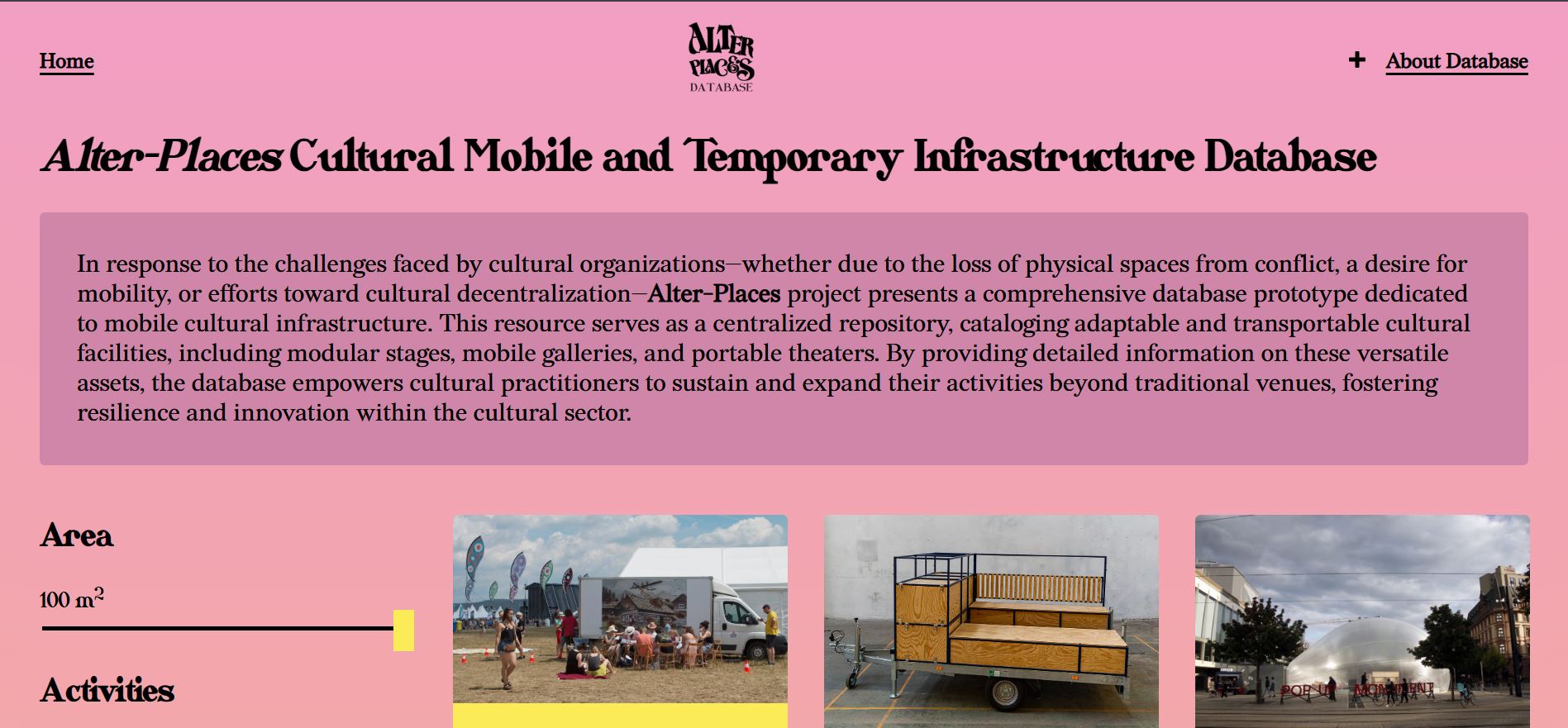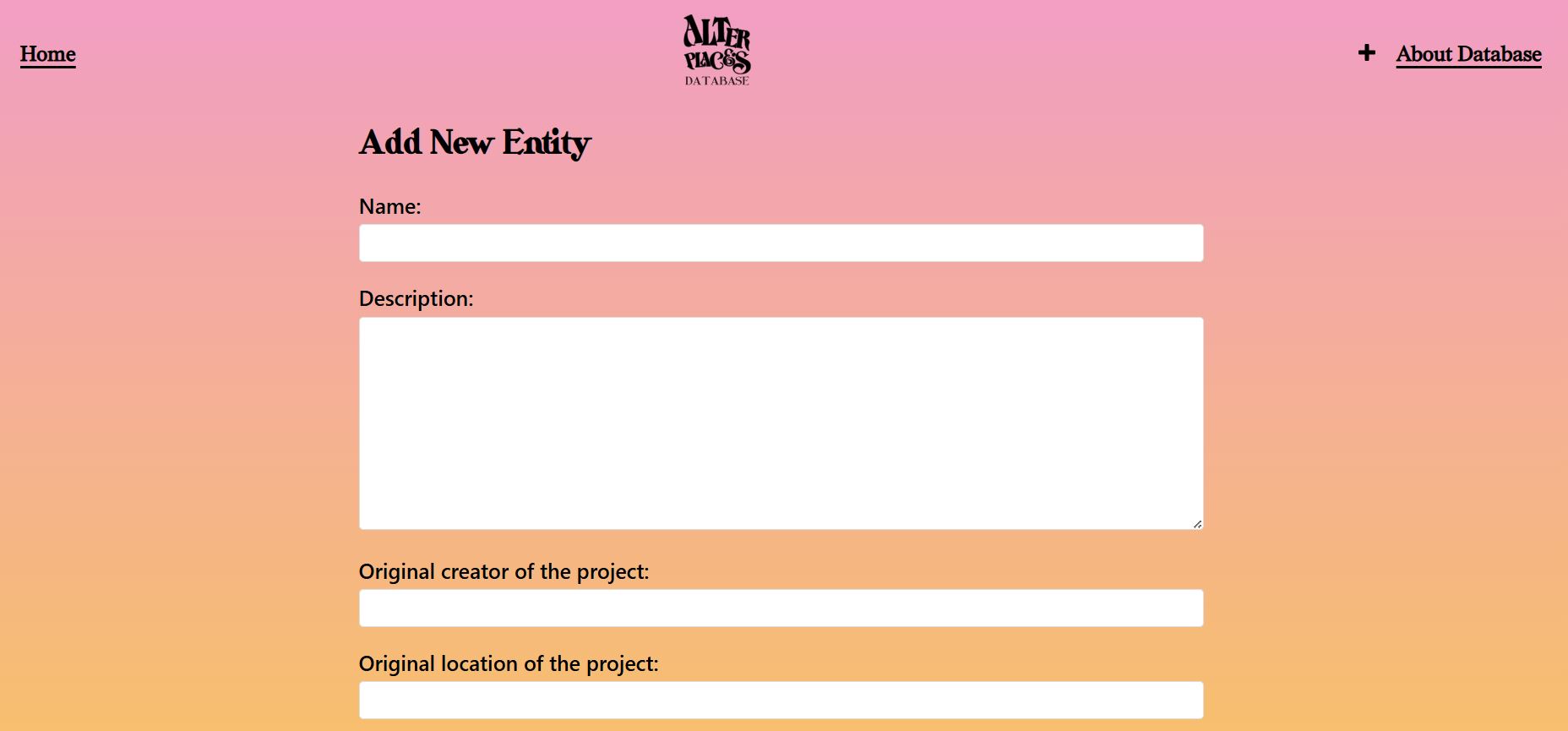Database of Cultural Mobile and Temporary Infrastructure
- 30.06.25
- Prototype #1.1

Before we can talk about sustainable cultural spaces, we have to confront the reality that many ACPs are not sustainable at all. Cultural centers often disappear not because of environmental decay or community apathy, but due to direct opposition—political, economic, or ideological.
Long Winter from Toronto, NGBG in Malmö and IZOLYATSIA in Donetsk and Kyiv all lost their physical homes to such forces. In Malmö, the site became a trendy venue; in Donetsk, it was transformed into a Russian-run torture center. These examples highlight the fragility of cultural initiatives and how quickly they can be erased or repurposed by dominant powers. In such conditions, long-term sustainability becomes a luxury. What’s needed are urgent, radical, and flexible responses to survive in a world marked by displacement, hostility, and impermanence.
This prototype aims to explore and inventory the mobility and resilience strategies that ACPs have implemented to embrace displacement and the lack of space. In response to the challenges faced by cultural organizations, Alter-Places project presents a comprehensive database prototype dedicated to mobile cultural infrastructure. This resource serves as a centralized repository, cataloging adaptable and transportable cultural facilities that already exist, including modular stages, mobile galleries, and portable theaters. By providing detailed information on these versatile assets, the database empowers cultural practitioners to sustain and expand their activities beyond traditional venues, fostering resilience and innovation within the cultural sector.
Elements included in the prototype: a database of with 42 (to date - June 2025) mobile and temporary infrastructures
Number of people involved: 5
Competencies required: database expertise, web development, domain-specific knowledge, information gathering & curation
Development time: 4 months
Estimated budget: 2000€
Methodology & Templates
1.Writing the database structure
First, we needed to establish the database structure. We sent a short questionnaire to all project members to understand their expectations for this database. This helped us identify the key characteristics required for each project, which will serve as filters when searching for projects. We decided on the following: type of activities, available space. Next, we collaboratively worked on the website's structure, including its visual identity (based on the graphic identity of Alter-Places), the different screens, and navigation. Finally, we developed a list of characteristics to be provided for each project entered into the database: short description, original location, required space, capacity, activity type, original creator, as well as photos, and a link to more detailed project information.
2.Making database web development
Next, we enlisted the help of IZOLYATSIA, a skilled partner in web development for the database. This project partner completely designed the online database's structure and provided us with access to populate it with the projects we had identified.
3.Gathering information and entering projects into the database
Finally, each team member populated the database with projects they knew, enriching it with diverse initiatives from around the world. By following the database's structure, we were able to fill it and record more than 40 projects. This database is intended to be updated over time with a "Participate" tab, allowing anyone to contribute to it.

4.Use scenarios
The Alter-Places database is a vital resource for cultural organizations without permanent physical spaces. It acts as a centralized hub for information that presents different usages:
Project inspiration: artists, designers and cultural groups find ideas for mobile stages, pop-up galleries, or adaptable performance spaces to create their own flexible cultural place. The database provides links to websites and contacts of designers, making it easy to access information.
Steps:
- User arrives on the homepage and enter a value in the filter “Type of activity” and/or “Area”
- The site dynamically updates and displays matching entries
- User scrolls through the list and clicks on a selected entry
- User is redirected to a dedicated page containing detailed descriptions, images, and capacity info.
- User clicks through to the project’s own website via the provided link.
Increased visibility and networking: organizations with existing mobile projects showcase their work, demonstrating the scope of their production and attracting collaborations
Activity sustainability: groups in challenging environments identify durable, deployable cultural units to maintain activities where traditional venues are absent or damaged.